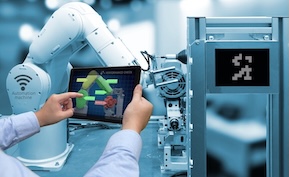Construction Management
From Blueprint to Build: How Construction Software Enables Integrated Project Delivery

Introduction: The construction industry has long been known for complexity—multiple stakeholders, evolving designs, tight budgets, and high risks. Traditional project delivery methods often rely on siloed workflows where architects, contractors, engineers, and owners operate in parallel rather than in true collaboration. This disconnect can lead to delays, miscommunication, and costly rework. Enter Integrated Project Delivery (IPD), a collaborative approach that aligns stakeholders around shared goals and incentives. Construction management software has become the backbone of IPD, providing the digital infrastructure that enables seamless collaboration from blueprint to build. This article explores how modern platforms make IPD a reality.
What is Integrated Project Delivery?
Integrated Project Delivery is a project delivery method that emphasizes collaboration among all stakeholders—owners, architects, engineers, contractors, and subcontractors—from the earliest stages of design through construction and turnover. Unlike traditional methods, IPD seeks to:
- Align Incentives: All parties share in both risks and rewards, motivating better outcomes.
- Encourage Early Involvement: Contractors and trades are included in planning stages to provide constructability insights.
- Promote Transparency: Budgets, schedules, and designs are openly shared and updated in real time.
- Focus on Outcomes: Success is measured not just by delivering a building, but by delivering value within scope, budget, and time.
For IPD to succeed, stakeholders need more than goodwill—they need tools that make collaboration efficient, transparent, and actionable.
The Role of Construction Management Software in IPD
Construction management software provides the digital infrastructure that IPD requires. The right platform supports stakeholders by:
- Centralizing Information: All drawings, RFIs, submittals, and schedules live in one shared environment.
- Enabling Real-Time Collaboration: Cloud-based systems allow architects in the office and contractors in the field to see and update the same information instantly.
- Tracking Accountability: Task assignments, approvals, and timelines are visible, reducing finger-pointing when issues arise.
- Supporting Decision-Making: Dashboards and analytics help stakeholders track progress against cost and schedule goals.
These capabilities transform the promise of IPD into an operational reality.
Collaboration from Design to Construction
One of the most powerful aspects of construction software in IPD is its ability to integrate the design and construction phases. Traditionally, architects and engineers design a project, and only later do contractors provide input. This often leads to design revisions, rework, and schedule slippage. With integrated platforms:
- Design Feedback Loops: Contractors can provide real-time feedback on constructability and cost during design phases.
- BIM Integration: Building Information Modeling (BIM) data can be layered into the project management platform for clash detection and coordination.
- Early Cost Estimation: Estimating tools within software allow cost implications of design decisions to be modeled instantly.
- Owner Visibility: Owners can track design evolution, ensuring project goals remain aligned with vision and budget.
Breaking Down Communication Silos
Miscommunication is one of the leading causes of project delays and cost overruns. Construction software reduces this risk by:
- Shared Dashboards: All stakeholders see the same project health indicators.
- Automated Notifications: When RFIs or submittals require attention, the right parties are alerted automatically.
- Version Control: No more confusion over outdated drawings—everyone works from the latest approved version.
- Mobile Access: Field teams can capture photos, mark up drawings, and log updates directly into the system.
These tools ensure that critical information flows freely across the project ecosystem.
Cost and Schedule Alignment
Shared accountability in IPD means stakeholders must collectively manage cost and schedule risks. Software tools make this manageable by:
- Real-Time Budget Tracking: Budgets update automatically as change orders and invoices are processed.
- Integrated Scheduling: Project schedules are visible to all, with dependencies clearly mapped.
- Forecasting Tools: Predictive analytics identify risks of delay or overspending before they materialize.
- Scenario Modeling: Teams can test “what if” scenarios to evaluate trade-offs before making key decisions.
Case Study: Mid-Sized Hospital Project
A regional healthcare organization pursued an IPD approach to build a new hospital wing. Using a cloud-based construction management platform, they:
- Integrated architects, engineers, and contractors into the design process from day one.
- Used BIM-integrated software to detect clashes before construction began, saving an estimated $500,000 in rework.
- Gave owners real-time visibility into budget and schedule dashboards, improving trust and collaboration.
- Completed the project three months early and 5% under budget, with high stakeholder satisfaction.
This success illustrates how software-driven IPD can achieve better outcomes than traditional delivery methods.
Challenges of Software-Driven IPD
While the benefits are significant, implementing IPD with construction software is not without challenges:
- Upfront Investment: Advanced platforms require licensing and training costs.
- Cultural Shift: Stakeholders must embrace transparency and shared accountability, which can be uncomfortable for some.
- Technical Integration: Ensuring that BIM, project management, and financial tools integrate seamlessly requires planning.
- Data Management: With so much information flowing, strong governance is needed to maintain accuracy and security.
Best Practices for Success
To make IPD work effectively with construction management software, organizations should:
- Select the Right Platform: Choose software that integrates with existing tools and supports BIM.
- Invest in Training: Ensure all stakeholders are proficient in using the platform.
- Establish Data Protocols: Define how information will be entered, updated, and approved.
- Encourage a Collaborative Culture: Foster openness and shared ownership of project outcomes.
Conclusion
Integrated Project Delivery represents the future of construction, offering a collaborative framework that aligns all stakeholders toward shared success. Construction management software is the engine that makes this approach possible, breaking down silos, enabling real-time collaboration, and aligning cost and schedule goals. While challenges exist, organizations that embrace software-driven IPD can expect to deliver projects faster, at lower cost, and with greater satisfaction for all involved. From blueprint to build, the path forward for construction lies in integration—and software is the foundation that makes it work.






